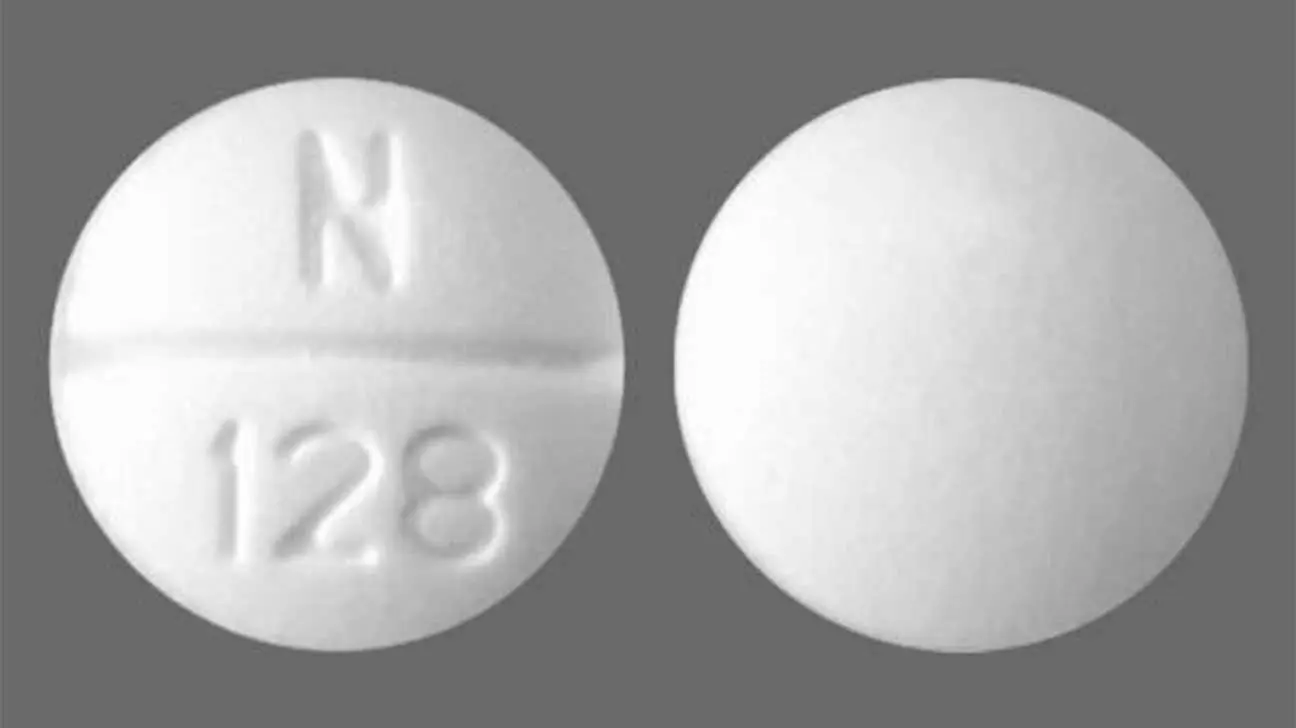
Dolophine is a prescription drug that contains methadone. It is a strong painkiller that belongs to a class of medications known as opioid analgesics, or opiates.
Dolophine is prescribed to treat severe pain, for its analgesic effects. It can also treat opioid dependence in people with opioid use disorder.
Dolophine is similar to:
- generic methadone
- Methadose (another brand name for methadone)
This prescription medication can be taken short-term, or for long-term use as one component of a comprehensive opioid addiction treatment program.
Read more about taking methadone for opioid addiction treatment
What Does Dolophine Do?
Dolophine is a central nervous system depressant that binds to mu-opioid receptors in the brain. With this, it can slow down breathing, heart rate, and block pain signals.
When taken for opioid addiction, Dolophine can:
- prevent opioid withdrawal syndrome
- reduce drug cravings for opioids (including heroin)
- block the euphoric effects of other opioids
- help individuals sustain their addiction recovery
Dolophine can effectively serve as a replacement medication for people who are addicted to opioids or people with opioid use disorder who become pregnant.
Side Effects Of Methadone (Dolophine)
Side effects of Dolophine can occur. Side effects can be mild to severe in nature and may last between 24 to 48 hours.
Short-term effects of Dolophine may include:
- headache
- drowsiness
- nausea or vomiting
- constipation
- dry mouth
- dizziness
- lightheadedness
- decreased blood pressure
- slower breathing rate
- sweating
- itchy skin
- weight gain
- flushed skin
- difficulty urinating
- changes in mood
Dolophine is a powerful drug that can affect coordination, mood, and slow down various functions in the body.
The strength of these effects may depend on the dose taken, frequency of use, how it’s used, whether it’s been taken with other drugs, and opioid tolerance.
Serious Side Effects Of Dolophine
Although uncommon, serious side effects can occur while taking Dolophine. Tell your prescribing healthcare professional if you experience any of the following.
Serious side effects of Dolophine can include:
- skin rash
- hives
- seizures
- trouble breathing
- respiratory depression
- symptoms of opioid withdrawal
- irregular heartbeat (arrhythmia)
- extreme drowsiness
- swelling of the face, eyes, mouth, or tongue
If someone has collapsed, is having breathing problems, or is unresponsive after taking Dolophine, call 911 for emergency medical attention right away.
Although these side effects are rare, serious side effects can be a sign of an adverse reaction or potential overdose—which can be life-threatening.
Long-Term Effects Of Dolophine
Dolophine is a long-acting opioid that can be taken long-term. However, long-term effects can occur and may be helpful to be aware of.
Long-term effects of Dolophine might include:
- increased tolerance
- physical dependence
- difficulty falling or staying asleep
- changes in weight
- erectile dysfunction
- irregular menstrual cycle
- decreased interest in sex
Dolophine is habit-forming. People who take Dolophine for more than a few weeks may need to gradually taper their dosage or detox prior to any attempt to stop taking it.
Do not stop taking Dolophine all at once, or without clinical guidance. This could result in methadone withdrawal.
Dolophine Withdrawal: Signs And Symptoms
Withdrawal is a syndrome that can develop if someone who has been taking Dolophine for some time tries to stop taking it too quickly or quits cold-turkey.
Early signs of Dolophine withdrawal might include:
- sweating
- chills
- nausea or vomiting
- tremors
- restlessness
- anxiety
- muscle or joint pain
- stomach cramps
- diarrhea
Withdrawal symptoms might feel like a bad case of the flu. Within detox, this can be effectively and safely managed.
Who Needs Dolophine Detox?
Detoxification, or detox, is highly recommended for people who have a history of substance abuse or addiction. This can increase safety during the withdrawal process.
Medically supervised detox programs can:
- offer treatment for withdrawal
- provide a quiet detox setting
- prevent relapse to drug use
- offer 24/7 medical monitoring
- treat any medical complications that arise
Detox may be required for anyone who develops opioid dependency. Detox programs can occur on either an inpatient (recommended) or outpatient basis.
Can You Overdose On Dolophine?
Overdosing on methadone is possible. This can be caused by either taking an excessively high dose of Dolophine or by combining it with the use of other drugs.
Severe cases of Dolophine overdose can be life-threatening. To prevent overdose or other adverse effects, it’s important to take Dolophine exactly as prescribed.
Signs of Dolophine overdose can include:
- cold, clammy skin
- very slow, shallow, or stopped breathing
- unable to speak
- loss of consciousness
- very tiny pupils (pinpoint pupils)
- limp muscles
- hypotension
If someone has stopped breathing, lost consciousness, or is unresponsive after taking Dolophine, call 911.
Opioid overdose can be reversed if treated quickly with naloxone (Narcan).
Potential Risks Of Taking Dolophine
Dolophine is safe and effective when taken as directed. However, like any prescription medication, its use does come with certain risks.
Potential risks of Dolophine may include:
- drug misuse
- addiction
- respiratory depression
- sedation
- QT prolongation
- overdose (in high doses or mixed with other drugs)
- neonatal opioid withdrawal syndrome
Methadone, the primary ingredient in Dolophine, has been used to treat opioid addiction for over 50 years. Despite potential risks, for many, methadone can be life-saving.
Alternatives To Dolophine For Opioid Use Disorder
Dolophine is one of several medications that can be used to treat opioid use disorder, as one component of a medication-assisted treatment program.
If Dolophine is not preferred, or if it is not offered by a treatment program, another FDA-approved medication for opioid dependency may be taken instead.
Other medications for opioid use disorder include:
- Subutex (buprenorphine)
- Suboxone (buprenorphine/naloxone)
- generic buprenorphine
- generic methadone
- Zubsolv (buprenorphine/naloxone)
- Vivitrol (naltrexone)
- generic naltrexone
Dolophine FAQs
Find answers to frequently asked questions about taking Dolophine for opioid use disorder.
❓ Is Dolophine The Same As Methadone?
✔️ Methadone is the primary ingredient in Dolophine. Dolophine is a brand name version of methadone. Although they can come in different forms, they are essentially the same.
❓ What Is The Classification Of Dolophine?
✔️ Dolophine (methadone) is a long-acting full opioid agonist. Opioids, sometimes referred to as opiates or narcotics, are a class of strong painkillers.
Dolophine is further classified as a schedule II controlled substance by the U.S. Drug Enforcement Administration (DEA).
❓ Can You Take Dolophine While Pregnant?
✔️ Methadone is a preferred treatment for opioid use disorder in pregnant patients. It is not generally recommended for people without opioid dependence during pregnancy.
Taking Dolophine while pregnant or breastfeeding can reduce risks associated with untreated opioid use disorder.
These include:
- opioid withdrawal
- poor maternal health
- miscarriage
- fetal convulsions
- low birthweight
- birth defects
- other pregnancy complications
Dolophine can cross both the placenta and into breast milk. Observation of a newborn following birth may be required, due to a risk for neonatal abstinence syndrome.
❓ Does Dolophine Interact With Other Drugs?
✔️ Dolophine can interact with a variety of drugs. Before taking Dolophine, tell your healthcare provider about any other medications or supplements you’re currently taking.
Drug interactions with Dolophine include:
- anti-anxiety medications (e.g. benzodiazepines)
- antidepressants
- alcohol
- blood pressure medications
- heart medications
- HIV medications
- anticonvulsants (e.g. carbamazepine)
- CYP3A4 inhibitors
- other CNS depressants
Certain drugs can enhance or inhibit the effects of Dolophine dosing. This can reduce its effectiveness, and may increase the risk of accidental opioid overdose.
❓ Is Dolophine Addictive?
✔️ Dolophine can be habit-forming. Chronic use can result in physical dependence. Misusing Dolophine may also result in psychological addiction.
Signs of Dolophine addiction might include:
- constantly thinking about taking or getting more Dolophine
- unable to reduce your dose or stop taking Dolophine
- going to multiple doctors to get opioid prescriptions
- avoiding activities previously enjoyed in order to take Dolophine
- lying about how much or how often you take Dolophine
- experiencing Dolophine withdrawal symptoms
A primary sign of Dolophine abuse and addiction is regularly taking it in any way other than prescribed by a doctor. If this occurs, consider seeking professional help.
❓ Is Dolophine Prescribed For Opioid Dependence?
✔️ Yes. Dolophine is a type of methadone product that can prevent opioid withdrawal and reduce cravings in people seeking to recover from opioid addiction.
Dolophine can effectively block the euphoric effects of other drugs and replace other opioids as a long-term maintenance medication.
Find Treatment For Opioid Addiction Today
Dolophine (methadone) is one of several medications that is FDA-approved for medication-assisted treatment, the most effective treatment for opioid use disorder.
If you’re looking for addiction treatment for yourself or a loved one, don’t wait. Call our helpline today to find a substance abuse treatment program that’s right for you.
Addiction Resource aims to provide only the most current, accurate information in regards to addiction and addiction treatment, which means we only reference the most credible sources available.
These include peer-reviewed journals, government entities and academic institutions, and leaders in addiction healthcare and advocacy. Learn more about how we safeguard our content by viewing our editorial policy.
- Substance Abuse and Mental Health Services Administration (SAMHSA) — Methadone
https://www.samhsa.gov/medication-assisted-treatment/medications-counseling-related-conditions/methadone - U.S. Drug Enforcement Administration (DEA) — Drug Scheduling
https://www.dea.gov/drug-information/drug-scheduling - U.S. Food & Drug Administration (FDA) — DOLOPHINE (methadone) label
https://www.accessdata.fda.gov/drugsatfda_docs/label/2015/006134s038lbl.pdf - U.S. National Institute on Drug Abuse (NIDA) — Medications to Treat Opioid Use Disorder Research Report
https://www.drugabuse.gov/publications/research-reports/medications-to-treat-opioid-addiction/overview - U.S. National Library of Medicine: MedlinePlus — Methadone
https://medlineplus.gov/druginfo/meds/a682134.html


